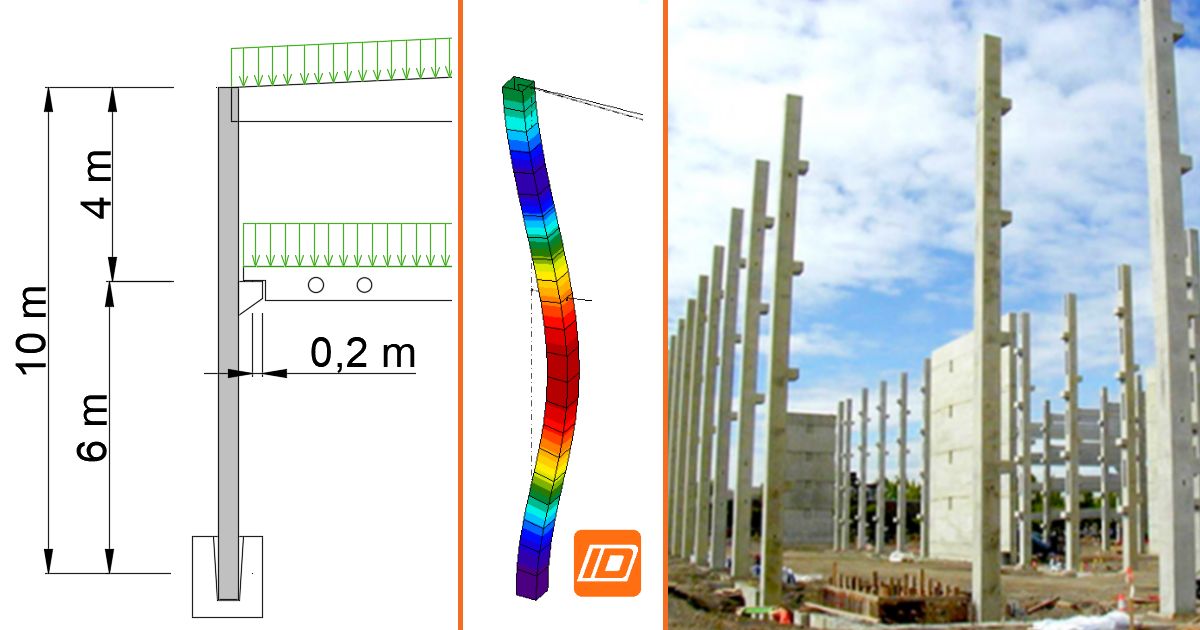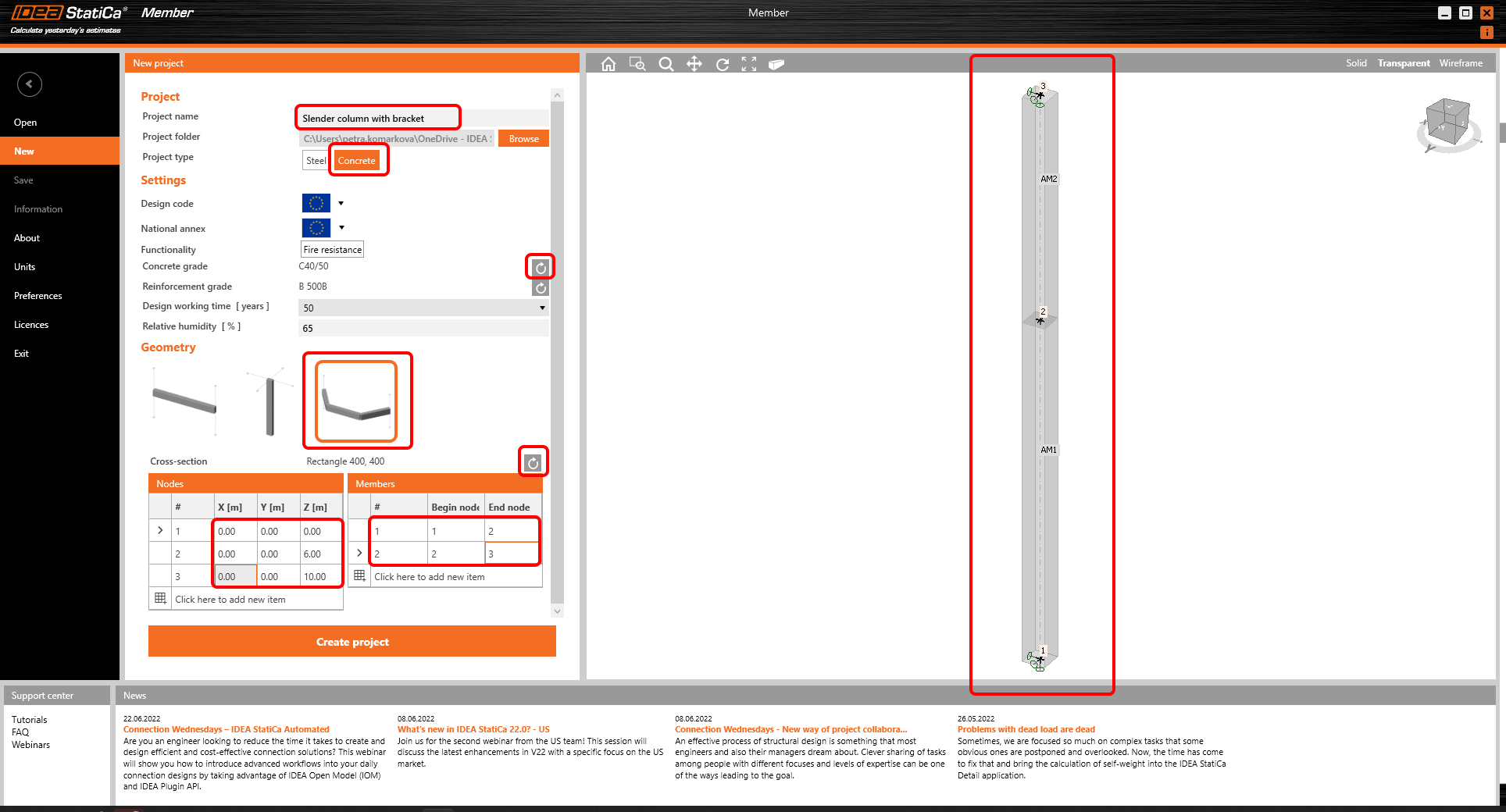Stability of slender RC precast columns with brackets
Engineering problem
Imagine you've got to design a reinforced concrete column (RC). The project's investor says that the column must be as slender as possible with brackets enabling to support of adjacent beams. The cross-section of the column is rectangular, dimensions are... concrete class is... The column is subjected to variable loads from the roof (live, snow, and wind load), the self-weight, and eccentric, concentrated loads coming from the adjacent beams through the short brackets.
How to solve the stability of slender precast RC columns with brackets?
You can go the route of manual but tedious calculations. You can also use simple tools in the form of Excel spreadsheets. Or you can use a modern tool designed to solve similar tasks in minutes. IDEA StatiCa Member is just such a tool.
Due to advanced analyses, you can design and check slender concrete columns in minutes. The workflow was developed in such a manner that you can easily create the structural system, subject it to all loads acting on members, design the reinforcement and immediately run the analyses and checks. At the same time, advanced nonlinear analyses (GMNIA) capture the real behavior of slender members, which tend to lose their stability before reaching the material's ultimate strength.
Let's start from the beginning:
- Create the geometry via general assignment. Due to the numbering of the nodes, you define the structural scheme very easily.
- How to quickly orient yourself in your model? The joints are displayed with the cube around that is highlighted when the joint is selected, either in the navigation tree on in the 3D scene. By clicking on Joints in the ribbon the labels can be displayed, too. Switch among solid, transparent, and wireframe display modes.
- Use related members if necessary. If a related member exists, it is recommended to model it to capture the real behavior or boundary conditions of the analyzed member. Check if the constraints are in compliance with the global model for the whole structure.
- How to be fast and effective when creating the model? Use the right-click button on your mouse. Easily add a load effect or a reinforcement.
- You can add a line or point load on all members, analyzed and related. The load values ought to be factored.
- Optimize reinforcement layout using the check-boxes by turning them on and off. Or edit the reinforcement directly in the property window instead of launching the reinforcement editor.
- Run all types of non-linear analyses and check out the results and checks.
Isolated member or the whole structure?
Do you like the workflow mentioned above but you prefer to model the global model of the whole structure in FEA software (SCIA Engineer, RFEM, AxisVM, Robot Structural Analysis, SAP2000, etc.) instead of solving the isolated member only?
No problem at all. IDEA StatiCa Member can be linked to your FEA global model via Checkbot and you can import the critical column including the geometry, material, and loads here. Then, only the boundary conditions need to be set and a GMNIA analysis can be run. Check if your FEA is linked to IDEA StatiCa!
What about the bracket design?
Bracket or corbel is a well-known discontinuity region where classical beam theory cannot be applied. For that, there is a Compatible stress field method (CSFM) developed and implemented in IDEA StatiCa Detail. If you are interested in designing and check of the short bracket, look at our tutorial or webinar dedicated to this topic.
Why IDEA StatiCa Member?
IDEA StatiCa Member for concrete was developed in order to deliver a simple engineering workflow for complex tasks such as considering non-linear calculations, stability of slender columns, taking into account material and geometrical nonlinearities including initial imperfections and code-compliant (so far, the Eurocode). Use the complex analysis wrapped in a simple workflow and a friendly environment!










